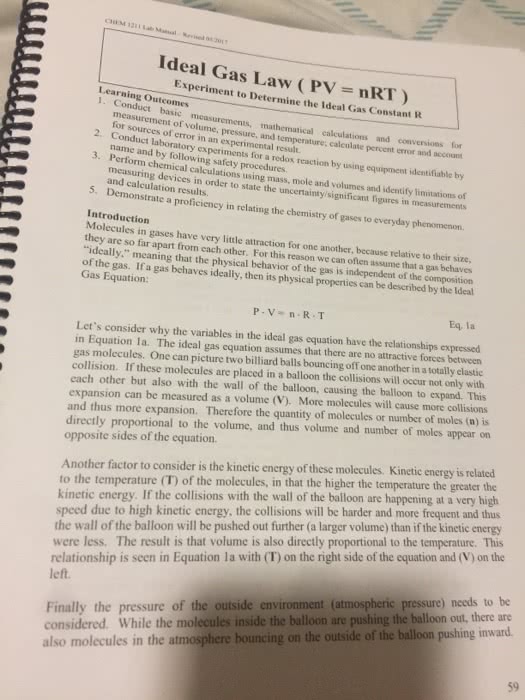CHEM 151 Chapter Notes - Chapter 1: Ionic Compound, Nitric Oxide, Horse Length
Document Summary
The characterization of the properties of the particles that make up chemical substances is accomplished by generating information about three basic properties of the particles of matter: their mass, their chemical composition, their three dimensional structure. Ideal gas law: n=pv/ (kb)(t: number of particles for an ideal gas is solely determined by the values of p, v and t independently of the mass of the particles, atomic mass units: average relative atomic mass. Whenever we weight masses of different types of atoms and these masses are equal in magnitude to each atoms average relative atomic mass, we should have samples with the same number of atoms. Measure or calculate the actual number of particles in a given sample using: avogadro"s number: 6. 022x10^23 (1 mol) The amount of substance that contains one avogadro"s number of particles of such substance. 4. 003 g of helium is 1 mol of helium atoms. 39. 95 g of argon is 1 mol of argon atoms.


